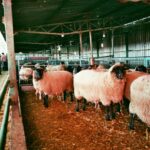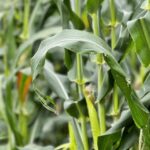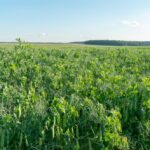Farming has evolved from traditional manual methods to highly mechanized systems that improve efficiency and productivity. The proper use of modern equipment can significantly increase profits while minimizing risks. Here’s how farmers can achieve this balance by making strategic choices.
1. Invest in the Right Equipment
To maximize profits, farmers should focus on acquiring equipment tailored to their specific farming needs. For instance:
- Tractors with attachments: Multi-purpose tractors can be fitted with plows, harrows, seeders, or sprayers to perform multiple tasks.
- Irrigation systems: Drip irrigation and sprinkler systems reduce water wastage and enhance crop yields.
- Harvesting machines: These reduce labor costs and speed up harvesting processes, ensuring minimal crop loss.
Conducting a cost-benefit analysis before purchasing any equipment ensures that the investment aligns with the farm’s scale and goals.
2. Use Technology to Monitor and Maintain Equipment
Modern farming equipment is often equipped with sensors and digital systems that monitor performance. For instance, GPS-guided tractors ensure precision planting, minimizing seed and fertilizer wastage. Farmers can also use predictive maintenance tools to prevent breakdowns. Regular servicing extends the life of equipment, saving repair costs and preventing unexpected downtime.
3. Optimize Equipment Usage
Underusing or overusing equipment can lead to inefficiencies. To minimize risks:
- Schedule operations appropriately: Avoid using heavy machinery during wet conditions to prevent soil compaction, which reduces soil fertility.
- Train workers: Proper training ensures that operators handle equipment efficiently, reducing wear and tear.
4. Leverage Equipment for Diversification
Equipment can be used to expand operations into new areas, such as value addition. For example, a farmer can invest in grain dryers, milk pasteurizers, or fruit packaging machines to increase the value of raw produce. This diversification enhances income streams and reduces dependency on single crops or products.
5. Mitigate Risks with Insurance
Equipment breakdown can lead to significant losses. Farmers should consider insuring their equipment to protect against unexpected repair or replacement costs. Many insurance providers also offer policies covering loss of income due to equipment failure.
6. Rent or Lease Instead of Buying
Small-scale farmers can minimize risks by renting or leasing equipment rather than buying outright. This approach reduces upfront costs and allows farmers to access the latest technology without the burden of ownership.
7. Embrace Automation and Smart Tools
Smart farming equipment, such as drones and automated irrigation systems, allows farmers to monitor crops and manage resources remotely. These technologies can identify issues like pest infestations or water stress early, minimizing losses and improving yields.
Using equipment strategically is vital for maximizing profits and minimizing risks in farming. By investing in the right tools, maintaining them properly, optimizing usage, and leveraging technology, farmers can improve efficiency and sustainability. In today’s competitive agricultural landscape, embracing these practices is essential for long-term success.
Join 'Farmers Mag' WhatsApp Channel
Get the latest Farming news and tips delivered straight to your WhatsApp
CLICK HERE TO JOIN






